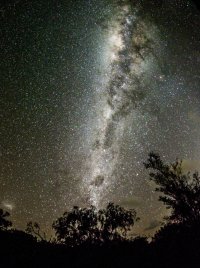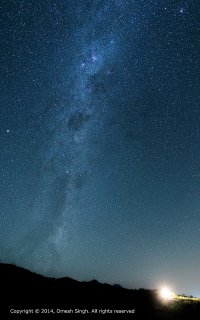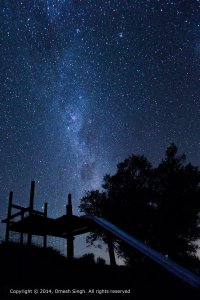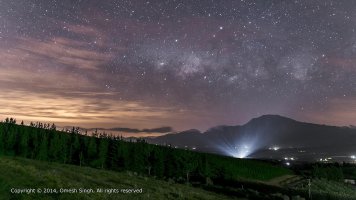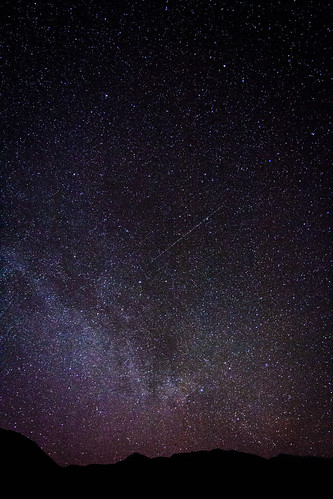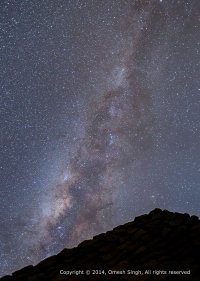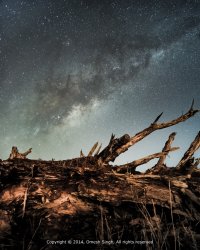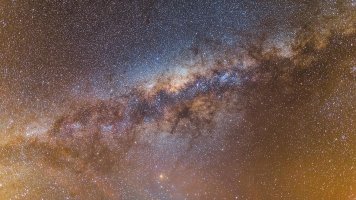You are using an out of date browser. It may not display this or other websites correctly.
You should upgrade or use an alternative browser.
You should upgrade or use an alternative browser.
Milky Way
- Thread starter tpatana
- Start date
joshmurrah said:Here's a recent shot of mine... had a good opportunity while at a beach condo facing the Gulf of Mexico on a moonless night.
Canon 5D3, 16-35 f/2.8L II - ISO 3200, f/2.8, 16mm, 30 seconds (right around the 600 rule)
Within Adobe PS CS6' ACR tool: cooled the temp to 3300K w/ -2 tint, contrast +98, clarity +48, vibrance/saturation both +21, +52 NR w/ 82 detail, and a very slight crop.
Hope you guys enjoy and find the details helpful.
Good work, and the satellite kind of adds to it.
Upvote
0
Some wide field astrophotography. Hopefully I can help bring this thread back to life.
The first two were taken on a river/camping trip outside Citrusdal. The third image is part of a time-lapse sequence shot North of Tulbagh.
The first two were taken on a river/camping trip outside Citrusdal. The third image is part of a time-lapse sequence shot North of Tulbagh.
Attachments
Upvote
0
StudentOfLight said:Some wide field astrophotography. Hopefully I can help bring this thread back to life.
The first two were taken on a river/camping trip outside Citrusdal. The third image is part of a time-lapse sequence shot North of Tulbagh.
I like the third image the best. What was making the bright light?
Upvote
0
This is not my image, however it is the most amazing milky way image I've ever seen. Blows my mind how good it is:
http://www.astrobin.com/full/46622/C/
Love that looping dust lane with three nebula, a golden one, a pink one, and a blue one, towards the lower left corner (that is part of the constellation Scorpius, the yellow is the star Antares, the pink is Al Niyat, and the blue is IC4603). Freakin amazing image.
http://www.astrobin.com/full/46622/C/
Love that looping dust lane with three nebula, a golden one, a pink one, and a blue one, towards the lower left corner (that is part of the constellation Scorpius, the yellow is the star Antares, the pink is Al Niyat, and the blue is IC4603). Freakin amazing image.
Upvote
0
The third image is lovely!StudentOfLight said:Some wide field astrophotography. Hopefully I can help bring this thread back to life.
The first two were taken on a river/camping trip outside Citrusdal. The third image is part of a time-lapse sequence shot North of Tulbagh.
Upvote
0
Some shots with my Canon 5d mkii and 50mm 1.8. Most of the shots are at about 10 seconds F/1.8, iso 1600, all are in my backyard in Montana.
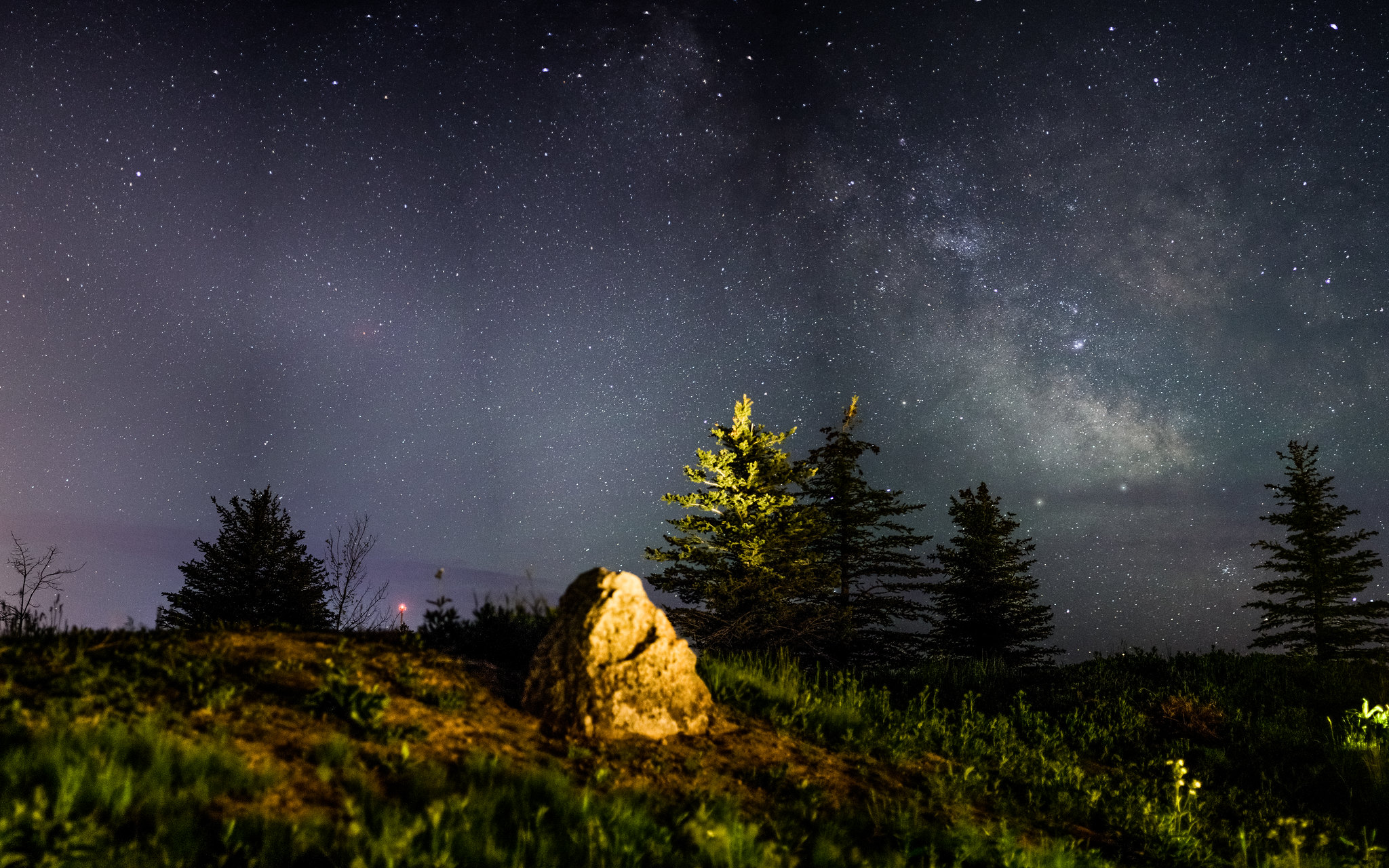
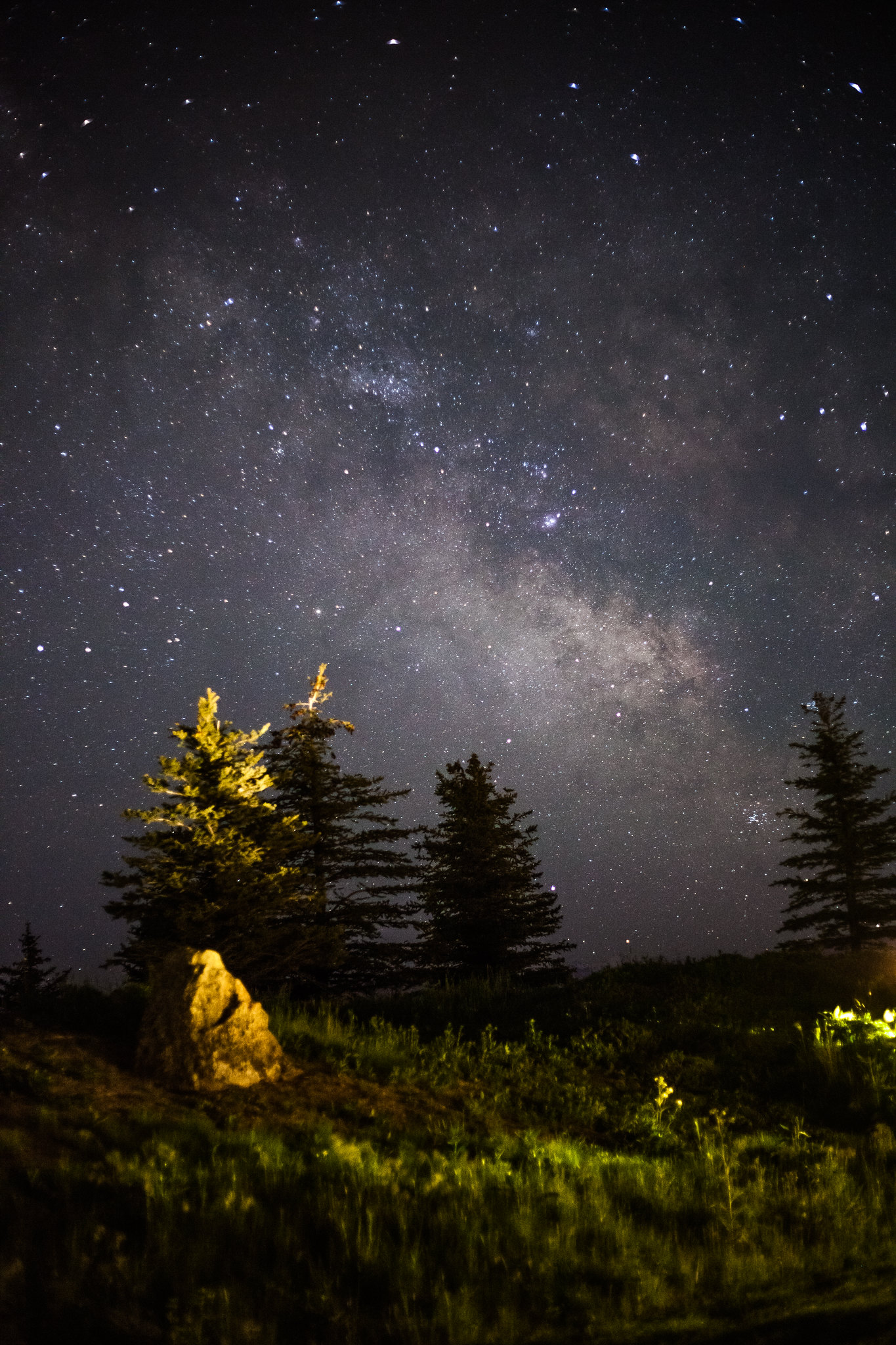
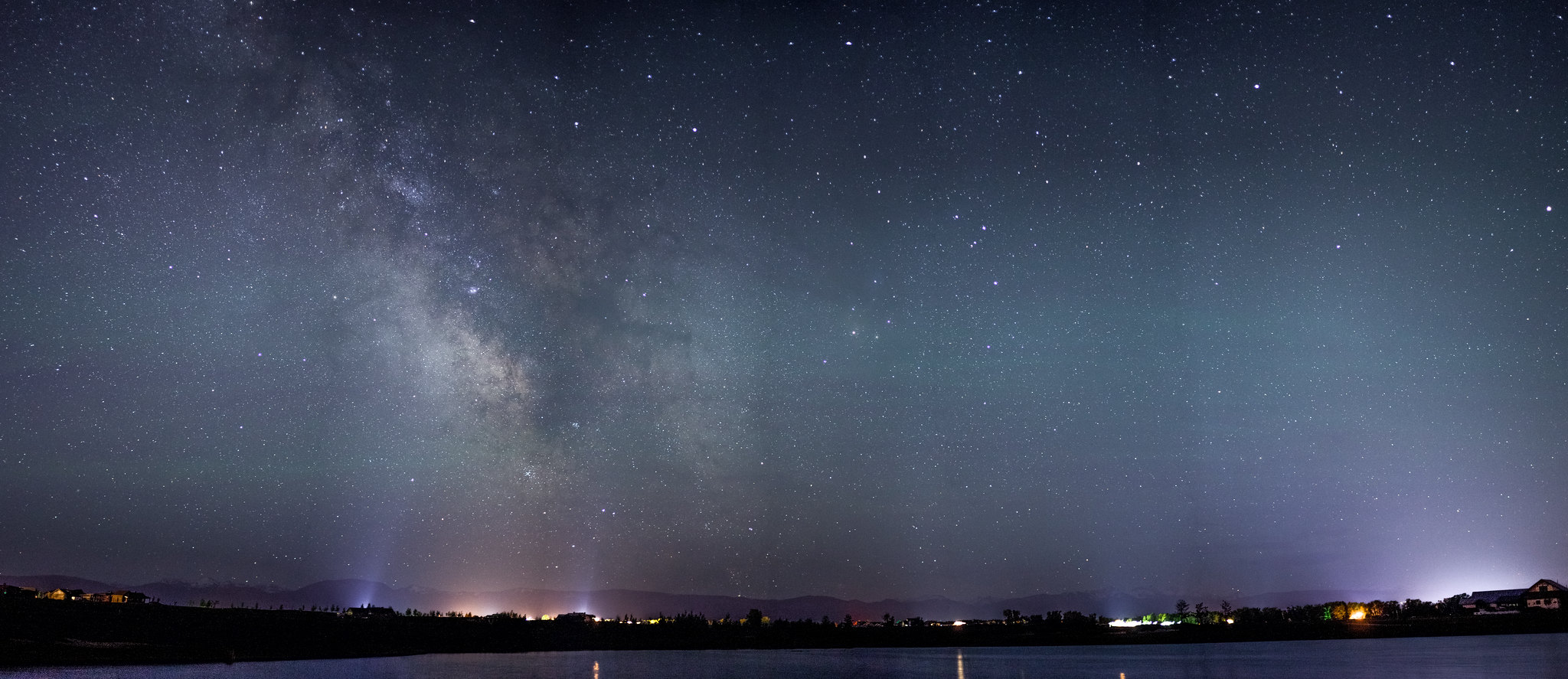
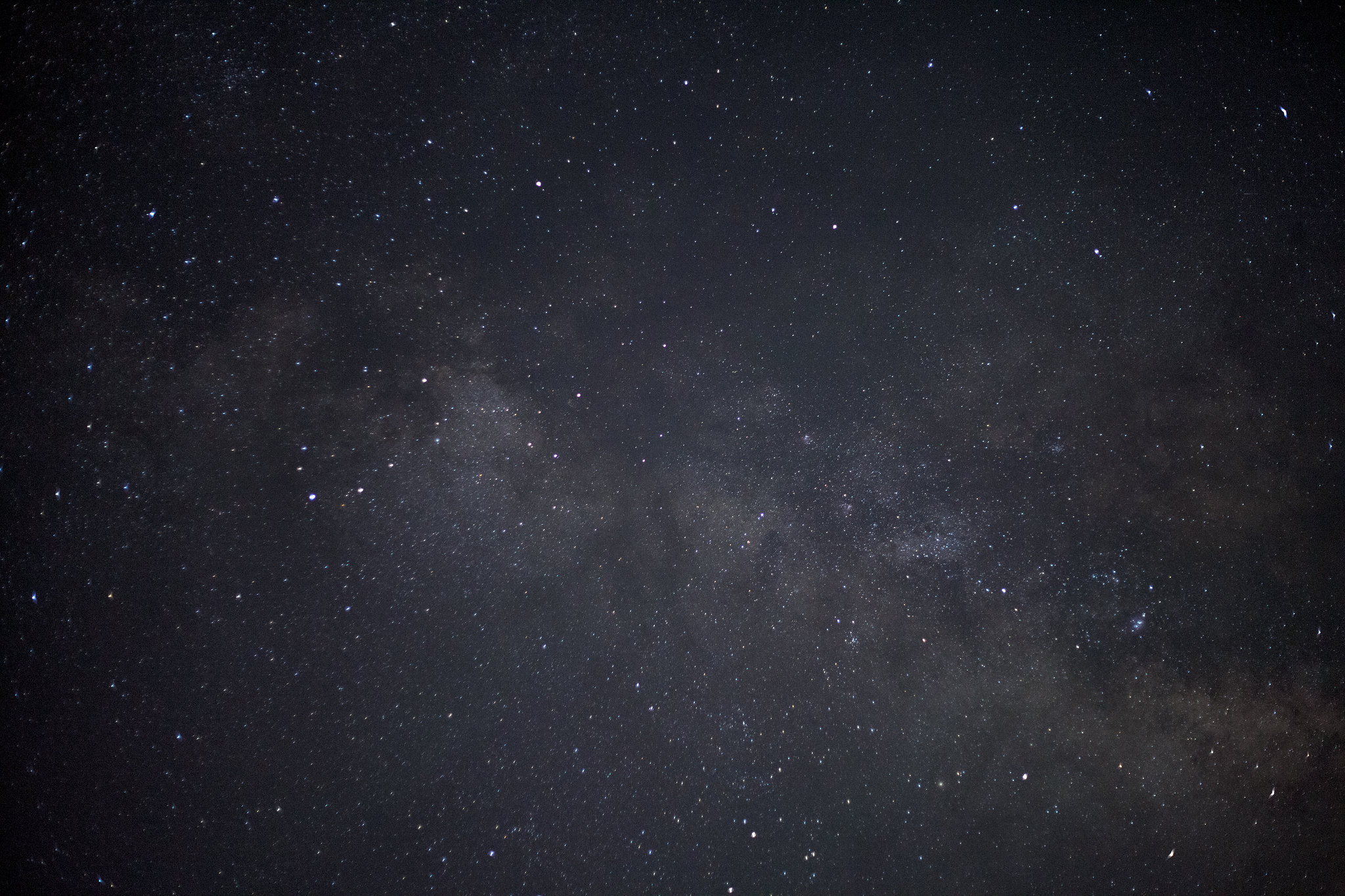
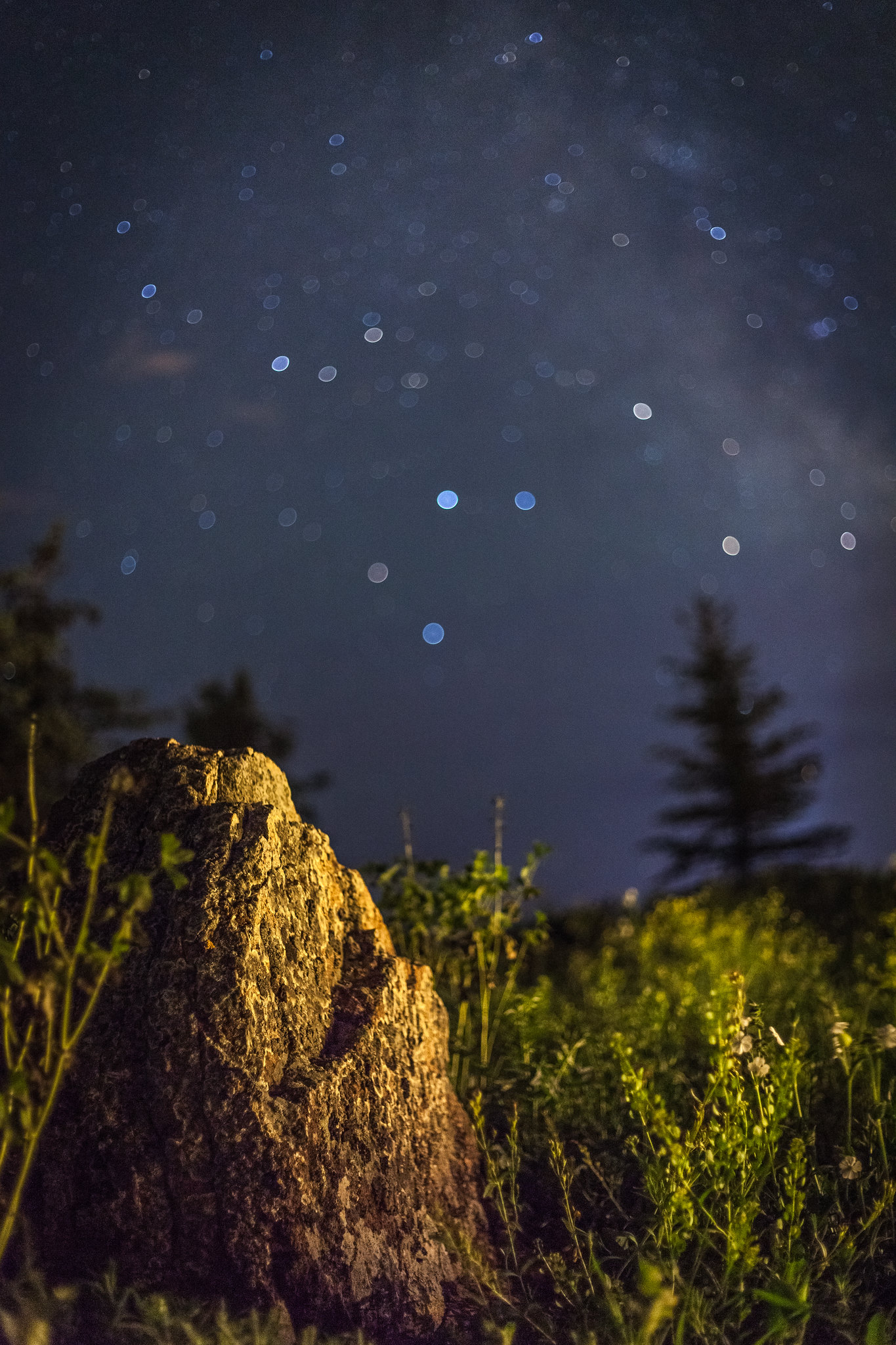





Upvote
0
jrista said:This is not my image, however it is the most amazing milky way image I've ever seen. Blows my mind how good it is:
http://www.astrobin.com/full/46622/C/
Love that looping dust lane with three nebula, a golden one, a pink one, and a blue one, towards the lower left corner (that is part of the constellation Scorpius, the yellow is the star Antares, the pink is Al Niyat, and the blue is IC4603). Freakin amazing image.
Thanks, this is a nice image, but it looks fake. The dark dust in the Milky Way, is darker than the ground and the shadows on it. The contrast is far too high in the sky, and almost too low on the ground below. It looks like a CG animation to me. If it had been done more naturally, it would have looked better.
Upvote
0
CarlTN said:Andy_Hodapp said:Some shots with my Canon 5d mkii and 50mm 1.8. Most of the shots are at about 10 seconds F/1.8, iso 1600, all are in my backyard in Montana.





Very nice work! Is the third image not a stitched pano?
The first and the third as panos
Upvote
0
CarlTN said:StudentOfLight said:Some wide field astrophotography. Hopefully I can help bring this thread back to life.
The first two were taken on a river/camping trip outside Citrusdal. The third image is part of a time-lapse sequence shot North of Tulbagh.
I like the third image the best. What was making the bright light?
I'm not sure but it might have been a security light on a neighboring farm or warehouse on the other side of the valley. It was reasonably bright to the naked eye and didn't move for the entire evening of timelapse shots.
Upvote
0
My first attempt at a image stacking. (Using files from a recent timelapse sequence)
Canon EOS 5D Mark-III, with Canon EF 24mm f/1.4 L II USM
15.0s at f/2.0, ISO 1600 (16 Exposures, WB=3900K, mRAW)
I did not plan on stacking this was just an after the fact exercise. Anyway, I didn't see a huge benefit from stacking these mRAW files. When it's dark again next month I will take another trip out into the darker areas to shoot full size RAW and go through the same exercise and see how much of a difference stacking will make on full res images. It will be interesting to know how much I can lower the exposure to get more depth of field or to get a faster shutter speed.
Canon EOS 5D Mark-III, with Canon EF 24mm f/1.4 L II USM
15.0s at f/2.0, ISO 1600 (16 Exposures, WB=3900K, mRAW)
I did not plan on stacking this was just an after the fact exercise. Anyway, I didn't see a huge benefit from stacking these mRAW files. When it's dark again next month I will take another trip out into the darker areas to shoot full size RAW and go through the same exercise and see how much of a difference stacking will make on full res images. It will be interesting to know how much I can lower the exposure to get more depth of field or to get a faster shutter speed.
Attachments
Upvote
0
Nice milky way view there, Student.
If you want to stack, you really need to use full RAW. The Canon mRAW format is actually more like a JPEG than anything, a 4:2:2 encoding of Y (luminance) and Cb (blue/yellow channel) and Cr (red/green channel). It is 14-bit, but it is actually not even remotely "raw". Stacking non-raw images doesn't produce nearly the same kind of results as stacking true RAW images.
For stacking to be most effective, you also want to have fairly closely temperature matched "dark frames" (same exposure time, ISO, and temperature...within a few degrees), say 30 of them, as well as about 150 "bias frames" (same ISO, shortest possible exposure time like 1/4000th or 1/8000th...super easy to create, and the more you stack, the better they are to calibrate.)
Once you have some real RAW lights, and some darks and biases, then you can stack with DSS, and the process is largely automated. Export as a TIFF (WITHOUT applying modifications), and you can do some pretty amazing tweaking and stretching in photoshop.
If you want to stack, you really need to use full RAW. The Canon mRAW format is actually more like a JPEG than anything, a 4:2:2 encoding of Y (luminance) and Cb (blue/yellow channel) and Cr (red/green channel). It is 14-bit, but it is actually not even remotely "raw". Stacking non-raw images doesn't produce nearly the same kind of results as stacking true RAW images.
For stacking to be most effective, you also want to have fairly closely temperature matched "dark frames" (same exposure time, ISO, and temperature...within a few degrees), say 30 of them, as well as about 150 "bias frames" (same ISO, shortest possible exposure time like 1/4000th or 1/8000th...super easy to create, and the more you stack, the better they are to calibrate.)
Once you have some real RAW lights, and some darks and biases, then you can stack with DSS, and the process is largely automated. Export as a TIFF (WITHOUT applying modifications), and you can do some pretty amazing tweaking and stretching in photoshop.
Upvote
0
Thanks for the advice. I'm really looking forward to my next trip which will be into the desert so much less light pollution as well than my previous shots.jrista said:Nice milky way view there, Student.
If you want to stack, you really need to use full RAW. The Canon mRAW format is actually more like a JPEG than anything, a 4:2:2 encoding of Y (luminance) and Cb (blue/yellow channel) and Cr (red/green channel). It is 14-bit, but it is actually not even remotely "raw". Stacking non-raw images doesn't produce nearly the same kind of results as stacking true RAW images.
For stacking to be most effective, you also want to have fairly closely temperature matched "dark frames" (same exposure time, ISO, and temperature...within a few degrees), say 30 of them, as well as about 150 "bias frames" (same ISO, shortest possible exposure time like 1/4000th or 1/8000th...super easy to create, and the more you stack, the better they are to calibrate.)
Once you have some real RAW lights, and some darks and biases, then you can stack with DSS, and the process is largely automated. Export as a TIFF (WITHOUT applying modifications), and you can do some pretty amazing tweaking and stretching in photoshop.
Upvote
0
Similar threads
- Replies
- 30
- Views
- 1K
- Replies
- 0
- Views
- 3K

